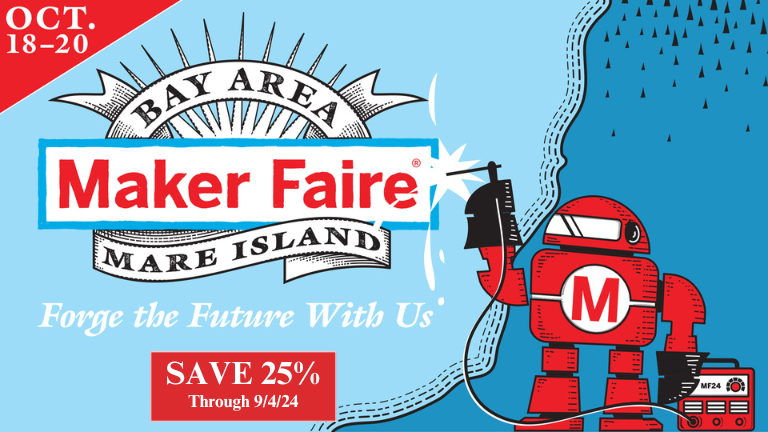Air Quality Pop-up Pavilion: Rethinking Shared Spaces
By Avye Couloute
The Air Quality Pavilion uses an internal sensor to monitor & then trigger various reactions to the CO2 levels, including opening & closing motorised shutter walls, an automatic sliding skylight, a fan & colour-coded warning lights.
Type: Social Impact, Education
Website: https://github.com/Avmaker/Pavilion
What inspired you or what is the idea that got you started?
Since the pandemic, social distancing along with the need for additional space and appropriate ventilation is hugely important. Therefore, I wanted to explore the concept of a POP-UP Pavilion - that could be installed in different locations to provide space & healthy indoor air quality solutions, and ultimately create a workshop based on it.
Air quality is something that is usually invisible to us so it is easy to ignore but it does have an impact on us from day to day, “carrying respiratory diseases which affect the probability of you getting infections".
The CO2 level in a closed space is “a good indicator of air quality and can highlight the need for ventilation”. Well-ventilated rooms are crucial for reducing the spread of airborne viruses. Lower CO2 levels are also “linked to improved learning outcomes and better cognitive performance”. In today’s world, this suggests that the way we design, equip & operate our shared spaces is more important than ever.
What is your project about and how does it work?
My project is about exploring the concept of a POP-UP Pavilion - A pavilion that could be installed in different locations to provide space & healthy indoor air quality solutions where needed
I produced a scaled-down pavilion that uses an internal sensor to monitor & then trigger various reactions to the CO2 levels from inside. The reactions include opening & closing motorized shutter walls, an automatic sliding skylight, a ventilation fan & color-coded CO2 level warning lights.
I have used stepper motors & servos to generate the movement and an Adafruit ESP 32-S2 as the brain stacked with a TFT screen to display the air quality data from the wall of the pavilion. The data is also visualized via IoT on Adafruit IO.
I coded the project using Circuit Python to control the stepper motors, the servos, the Neopixels, the fan, the CO2 sensor, and the TFT screen. I also used CircuitPython to code the visualization of the data on Adafruit IO.
What did you learn by doing this project?
I developed some very useful joining techniques that allowed me to create large components from several small pieces of material, making use of scrap materials whilst reducing waste.
I became more aware of good & bad CO2 levels and the importance of good ventilation.
I experimented with a lot of new functions on the CAD software, some of which I applied while designing the different components.
I used a lot of cardboard models to help visualize the different sections of the pavilion structure, so my modeling skills have definitely improved.
I learned about linkages & couplings and designed several laser cut components & mechanisms.
It was very challenging to design the pavilion in a way that all of the different features & main electronic components could be easily accessed without having to do a lot of major dismantling. Making several cardboard sketch models help me to gradually figure out and quickly try out ideas, and then make modifications.
What impact does your project have on others as well as yourself?
For this project, I decided to explore how indoor spaces can react to the air quality inside them and how to improve the experience of the users inside.
There are a range of spaces that can definitely benefit from this including classrooms, maker spaces, and seated eating areas in the hospitality sector
Because of the pandemic and issues surrounding social distancing and in some cases the need for more space and ventilation. The concept of a Pop Up Pavilion could provide space and indoor quality solutions.
I want to develop and refine a scaled-down fully working model of this pavilion concept and ultimately create a workshop based on it that will enable me to deliver hands-on sessions to other young people - giving them the opportunity to explore how spaces can monitor & react to internal air quality in order to improve the experience of the users.
I will definitely continue to develop the project into a workshop format to engage other young people.





